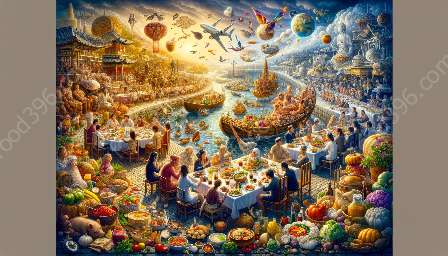Food standardization refers to the process of developing and implementing uniform practices and guidelines for the production, preparation, and presentation of food products. This comprehensive topic involves various elements such as industrialization, technological advancements, cultural exchange, and globalization. In this article, we will explore the standardization of food, its impact on food culture and history, and its relationship with food and globalization.
The Standardization of Food
Food standardization has emerged as a significant component of the modern food industry. It entails establishing consistent and reliable processes for the production, packaging, and distribution of food items. Standardization ensures that food products meet specific criteria related to quality, safety, and nutritional value. This process is essential for ensuring consumer protection and facilitating international trade.
In the context of standardization, food regulations and guidelines are established to govern various aspects of food production and processing. These regulations cover areas such as labeling requirements, food additives, hygiene standards, and product specifications. Additionally, standardization efforts encompass the development of industry-wide protocols for food safety, traceability, and quality control.
Food and Globalization
The standardization of food is closely intertwined with the phenomenon of globalization. As global trade and commerce have expanded, there has been a growing need for harmonized standards and regulations to facilitate the international exchange of food products. Globalization has enabled the convergence of culinary practices, leading to the diffusion of food cultures across different regions and nations.
Furthermore, the advent of multinational food corporations and the proliferation of fast-food chains have contributed to the dissemination of standardized food products worldwide. This globalization of food has resulted in the widespread availability of familiar food items in diverse locations, often leading to the homogenization of culinary experiences and preferences.
Food Culture and History
The standardization of food has deeply impacted traditional food cultures and historical culinary practices. Cultural and historical contexts significantly influence the diversity and uniqueness of food traditions. As standardization processes have become more prevalent, there has been an increasing concern about the potential loss of cultural authenticity and gastronomic heritage.
Historically, food has been an integral part of cultural identity, with distinct regional cuisines reflecting local customs, traditions, and environmental influences. However, the standardization of food has led to the proliferation of mass-produced, uniform food products that may not capture the essence of traditional, artisanal culinary practices.
Impact of Standardization on Food Culture and History
The impact of food standardization on food culture and history is multifaceted. On one hand, standardization has facilitated the mass production and distribution of food, leading to increased accessibility and affordability of certain food items. This has contributed to improved food security and availability in many parts of the world. Additionally, standardization has supported food safety initiatives, resulting in reduced instances of foodborne illnesses and contamination.
However, the standardization of food has also raised concerns about the erosion of cultural diversity and the marginalization of traditional food practices. As standardized products gain prominence in the global market, there is a risk of cultural homogenization, where unique culinary traditions and local flavors may be overshadowed by standardized, mass-market offerings.
Industrialization and Technology
Industrialization and technological advancements have played pivotal roles in driving the standardization of food. The industrial revolution transformed food production and processing, leading to the mechanization and standardization of manufacturing processes. The advent of technologies such as refrigeration, canning, and pasteurization revolutionized the preservation and distribution of food, contributing to the standardization of perishable goods.
Likewise, modern technologies, including food processing machinery, automation, and quality control systems, have furthered the standardization of food production. These technological innovations have enabled manufacturers to streamline operations, enhance product consistency, and meet stringent regulatory requirements.
Furthermore, advancements in packaging technologies and distribution logistics have underpinned the global export and import of standardized food products. These developments have facilitated the seamless integration of standardized food items into diverse cultural and culinary landscapes, shaping the contemporary global food industry.
Conclusion
The standardization of food intersects with complex themes of cultural heritage, globalization, and technological progress. While it has contributed to enhanced food safety and availability, it has also raised important questions about cultural preservation and diversity. As we navigate the evolving landscape of the global food industry, it is crucial to strike a balance between standardization and the preservation of authentic food cultures and histories.

